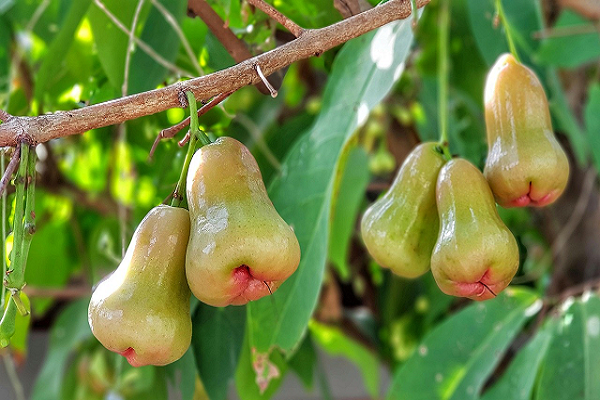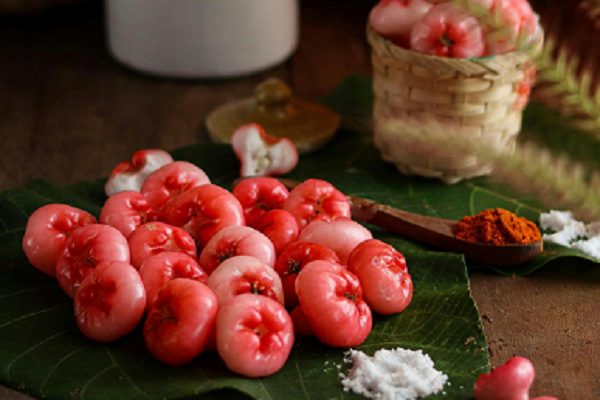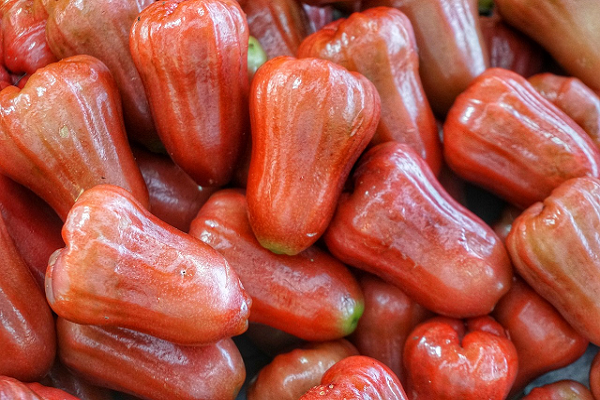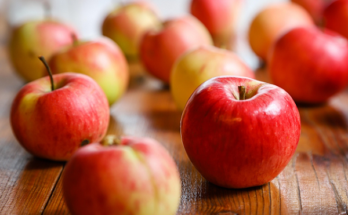Rose Apple: The Guide to this refreshing tropical fruit.
When we use the word apple we tend to think of the red, green or golden apples found in colder areas. Nature does not disappoint. The Rose Apple is one of such surprises; this is a tropical fruit resembling a shiny little bell and it is fresh, juicy and slightly sweet. It is not really an apple, in spite of its name. Rather it is yet another fruit, but with a different charm, taste, and good health.
The Rose Apple is commonly found in a large portion of Asia with India, Sri Lanka, Malaysia, Indonesia, and the Pacific Islands having the most prevalence of the Rose Apple. It is also referred to by several names: water apple, wax apple, java apple, bell fruit and jambu. That is why it is referred to as a rose apple due to its light scent, which is somehow resembling rose petals and its crisp bite resembling an apple.
We are going to have a complete look at the Rose Apple in this blog, including its history, appearance, nutrition, its health benefits, how to eat it, how to grow it and also how you can use it to make some desserts such as apple tart. Let’s dive in.

History and Origin of Rose Apple
The Rose Apple is a species that is centuries old and has developed in tropical Asia. It is a member of the genus Syzygium of the myrtle family. Clove and guava are also found in this family. The fruit is thought to have been indigenous to the East Indies and the Malay Peninsula. Then it was transferred to other areas such as India and Sri Lanka and then to the Pacific Islands and the Caribbean through traders and travelers.
Back way in ancient times people did not only appreciate the fruit as a source of food, but also as a source of medicines. The bark, leaves and roots of the Rose Apple were used in traditional medicines to cure digestive issues and fever as well as infections.
The fruit increased with the increase in trade. Nowadays it is cultivated in numerous tropical states and commonly found in home gardens and markets, as well as in city streets, in Southeast Asia.
Appearance and Taste
The Rose Apple is quite pretty in appearance. It is generally tiny and is generally bell shaped or pear shaped resembling a plum. The skin is shiny, waxy – and that is why people call it also wax apple. The colours may be as light green to pink to dark red, depending on the type.
Once you cut it open, inside it is white and sponge-like with plenty of water in it. It is nearly always seedless and sometimes one or two small seeds are in the middle.
The taste is very refreshing. It is not too sweet as mangoes, or sour as tamarind. Rather, it is lightly sweet with some floral touch – almost as though one is getting bitten into a fruit that has been kissed by rose petals. It is ideal to hot summer days with its high water content as it cools you down immediately and hydrates your body.
Nutrition Value of Rose Apple
Although the Rose Apple is light in taste it is very nutritious. This tropical fruit will provide you with the following:
* Calorie-free – Beneficial to weight loss.
* High in water – Makes the body hydrated.
* Vitamin C – Stimulates immunity and skin condition.
* Calcium – Strengthens bones and teeth.
* Iron – Supports blood health.
* Fiber – Helps digestion.
* Antioxidants – Help the body fight the free radical.
One hundred gram of Rose Apple typically has approximately 25-30 calories, and thus it is a very good snacking fruit.

Heath advantages of Rose Apple
Eating Rose Apple may offer numerous health benefits to you. And some of the most significant we will see:
Hydration Booster
The water content of rose apple is very high. It is almost like drinking water. It helps to keep you cool and avoids the dehydration.
Good for Digestion
Rose Apple contains fiber which aids in the smooth digestion process, prevents constipation and makes the stomach light.
Supports Immunity
The Vitamin C in Rose Apple helps your immune system and helps you to fight the usual infections.
Skin Glow
Due to its antioxidants and Vitamin C, Rose Apple has the potential to enhance the skin texture and stop aging.
Controls Diabetes
Certain researches also indicate that Rose Apple extracts can play a role in regulating the level of sugar in the blood. This would be useful to diabetics.
Protects the Heart
Rose Apple has low sodium and high potassium, which help to maintain the health of the heart in controlling the blood pressure.
Weight Management
Rose Apple is low in calories, yet rich in fiber and water, which means that it fills you without gaining any extra weight.
Uses of Rose Apple
The Rose Apple may be taken in a variety of ways:
Eaten fresh: Wash and eat it raw, in the form of a juicy snack.
In salads: Cut in thin slices and combine it to other tropical fruits.
In drinks: Shake it in juices or smoothies and it has a refreshing flavor.
Picked: Rose Apple is spiced and pickled in certain cultures.
In jam and jellies: The soft sweetness is good in jams.
In desserts: It may be incorporated with fruit custards, puddings and even baked items.
Using Rose Apple to prepare a tart is one very creative method. You can make the Rose Apple, as usual apple tart, cut in thin slices and design it over a creamy base in a tart shell. Rose Apple is lightly sweet, and therefore it goes well with custard as well as cream cheese fillings since it is naturally crisp. Brushing the top with honey or apricot glaze makes it taste better. This provides you with a special Rose Apple tart that appears beautiful and is cool.
How to Grow Rose Apple
This fruit is very simple to grow when one resides in a tropical or subtropical area.
- Climate: It is fond of warm weather and is incapable of frost.
- Soil: Well-drained soil containing sufficient organic matter.
- Watering:Requires frequent watering, particularly during dry seasons.
- Sunlight: Full sun exposure is ideal in terms of good growth and fruiting.
- Propagation: It is propagated by means of seed, still grafting and cuttings are more dependable.
- Harvesting: Harvesting of the tree begins 3-5 years after planting. When fruits are shiny and firm they are picked.
In cooler nations, it can also be planted in large pots in green houses.

Fun Facts of Rose Apple
Nor is Rose Apple, as its name indicates, a member of the apple family.
In certain countries, this fruit seeds are played with by spinning games among the children.
The Rose Apple tree is also an evergreen tree and shades all round the year.
Traditionally, there are medicines that are based on the use of the bark and leaves to treat sore throats and fevers.
Distinct varieties are also called by different names: chom chom in Thailand, jambu air in Indonesia, paneer fruit in South India.
It is sometimes difficult to tell it is not an artificial fruit due to its waxy skin.
Conclusion
Rose Apple is a unique fruit, which should be given more attention. It really is a tropical gift with its shimmery appearance, rose smell, and refreshing flavour, and health-promoting qualities. The fruit can be included in a healthy lifestyle as it is boosting hydration, enhancing digestion, and even skin health.
You can even eat it uncooked, and also incorporate it in dishes. One of the interesting thoughts is to prepare an Apple Tart. Similar to the classic apple tart, this one has a tropical twist and a refreshing novel taste. This is an excellent experimentation to food bloggers and those who love fruits and impress readers with something new.
Next time you see this Apple in the market, do not bear it just uncooked. Attempt to introduce it in various forms into your kitchen in salads, juices, desserts, and of course, in tarts. It does not only have a unique taste but also has several health benefits that you will enjoy.
In plain language, this apple is the way of nature who wants to explain that fruits do not have to be well-known and popular like a mango or an apple to be worth something. The familiarity of the less known fruits is sometimes the same fruit that is the source of greatest joy.
YOU CAN ALSO FIND INFORMATION ABOUT BRAEBURN APPLES


